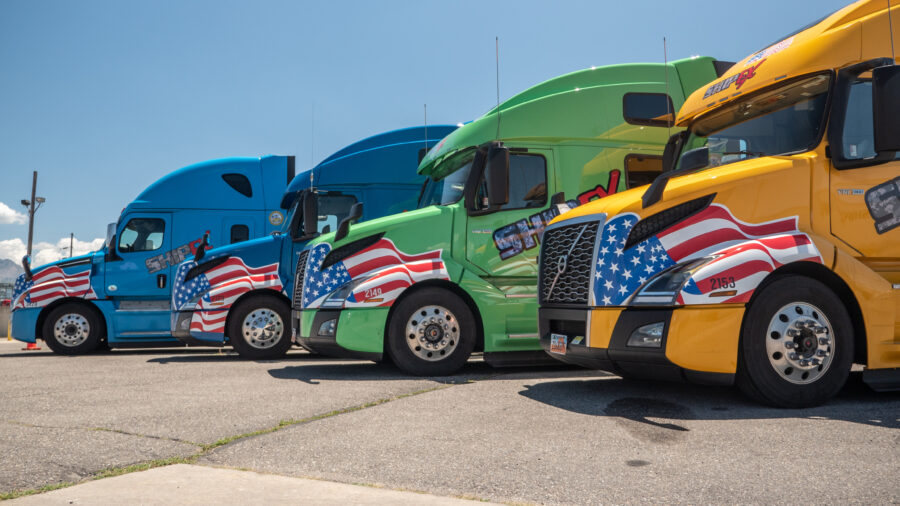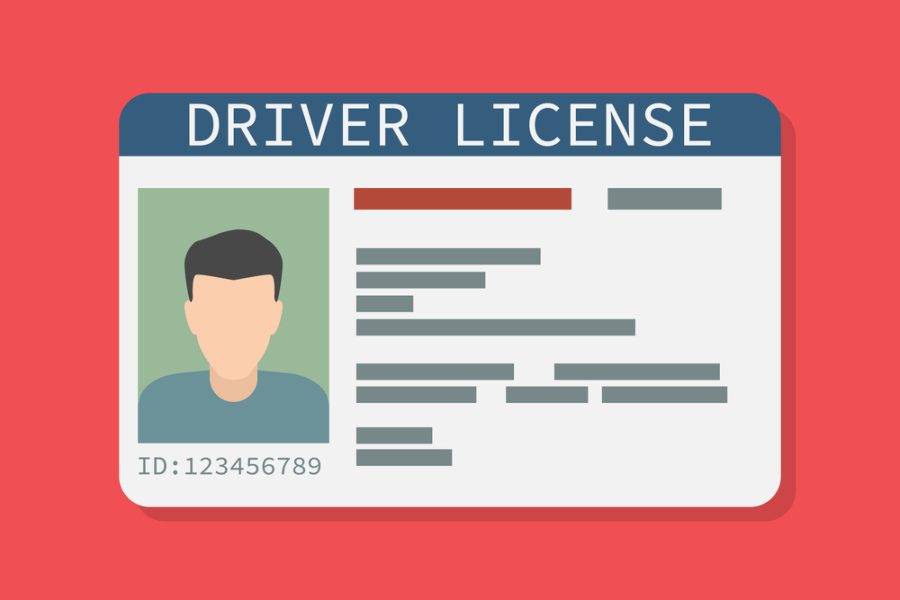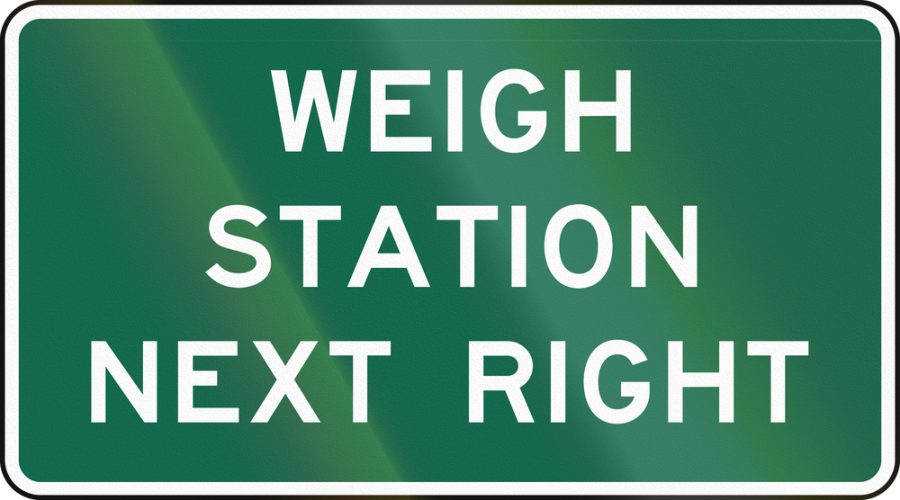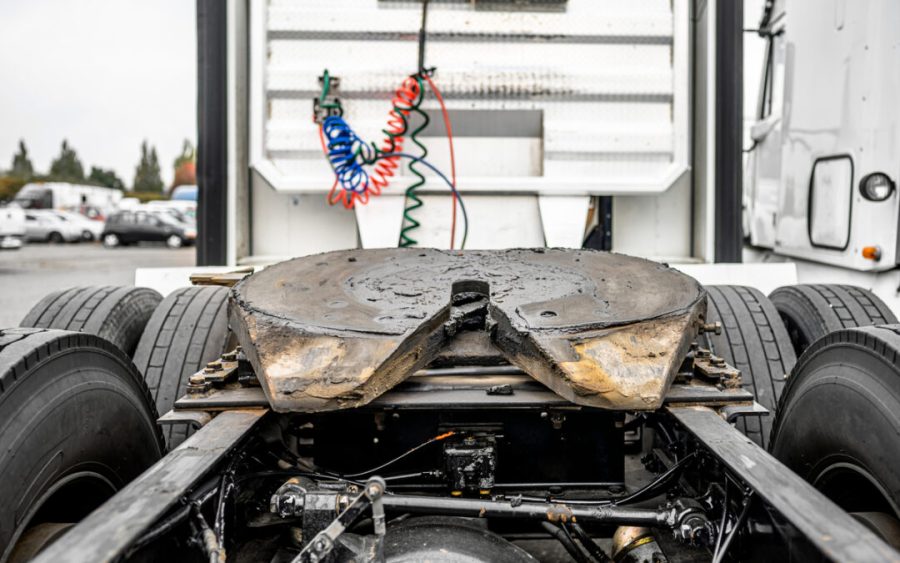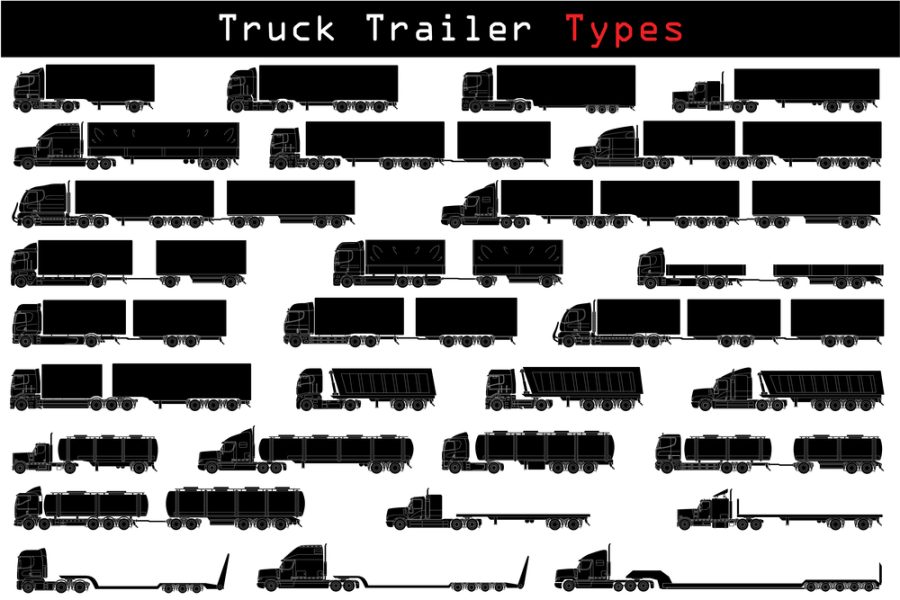Introduction
The trucking industry is a big part of the global economy, moving goods across the globe. It’s a big operation, from long hauls that cross state lines to local deliveries that get products to their final destination on time. With all the logistics and operational nuances, the trucking industry keeps the supply chain moving. So if you work in or with the trucking business, you need to know the lingo.
Knowing the lingo helps with communication and operation and safety. Keywords like OTR (Over-the-Road), LTL (Less Than Truckload), FTL (Full Truckload) are just a few of the jargon used daily by trucking professionals.
Vehicles and Equipment
Straight Truck
A straight truck is also known as a box truck or cube truck. It’s a vehicle where all the axles are attached to one frame. This type of truck is used for local deliveries and moving services because of its small size and maneuverability. Straight trucks are good for hauling furniture, appliances, and other large items that need to be handled with care but don’t need to be hauled long distances.
Tractor Trailer
A tractor-trailer combo is a common sight on the highways and is used for long-haul transportation. It’s a setup of a powerful tractor unit that houses the engine and driver’s cab and one or more trailers attached to it. The versatility of tractor-trailers allows them to haul different types of cargo depending on the trailer used. Common trailer types are flatbeds for oversized loads, lowboy trailers for heavy machinery, empty trailers for backhauls, and twin trailers for more capacity and efficiency.
Truck Cab and Cab
The truck cab is the part of the truck where the driver sits and operates the vehicle. Cabs come in different configurations for different purposes. Day cabs which don’t have sleeping compartments are used for short-haul and regional runs while sleeper cabs with a sleeping area are used for long haul. The functions and features of truck cabs can vary from basic to those with advanced technology and comfort features to make the driver safer and more comfortable on the road.
Commercial Vehicle
Commercial vehicles are any type of motor vehicle used for hauling goods or passengers for commercial purposes. Examples are delivery vans, buses, and semi-trucks. Commercial vehicle requirements are specific licensing for drivers, adherence to safety regulations, and proper vehicle maintenance. These vehicles are classified by weight, type, and use to ensure they meet the standards of the transportation industry.
Licensing and Regulations
Commercial Driver’s License (CDL)
Getting a Commercial Driver’s License (CDL) is a must for anyone who wants to be a professional truck driver. CDL requirements are a combination of age restrictions, a clean driving record, and passing both written and road tests.
Drivers must also undergo a medical examination to ensure they are physically fit to drive a commercial vehicle. The process of getting a CDL is designed to only allow qualified individuals to drive big and heavy vehicles. This is important for road safety and to prepare drivers for the challenges they may face.
The importance of CDL for truck drivers can’t be emphasized enough. It’s a required credential that means a driver has met the state and federal requirements. Having a CDL opens up job opportunities in the trucking industry and boosts a driver’s credibility and professionalism. It means drivers know the rules and regulations of commercial driving and can handle the complexities of driving big vehicles in different conditions.
Federal Motor Carrier Safety Administration (FMCSA)
The Federal Motor Carrier Safety Administration (FMCSA) is the governing body of the trucking industry. Its main goal is to reduce crashes, injuries, and fatalities involving big trucks and buses. FMCSA sets and enforces safety regulations that all commercial drivers and trucking companies must follow.
These regulations cover many areas including hours of service, vehicle maintenance, and driver qualifications. Compliance with FMCSA regulations is mandatory and is monitored through audits and inspections.
FMCSA has a big impact on safety and compliance in the trucking industry. By setting rules and standards FMCSA ensures commercial vehicles are driven safely and responsibly. This not only protects the drivers and their cargo but also the general public sharing the road. FMCSA regulations are updated regularly to address new safety concerns and technology, to reduce risks and make the nation’s highways safer.
Weights and Measurements
Gross Vehicle Weight Rating (GVWR)
Gross Vehicle Weight Rating (GVWR) is a specification of any commercial vehicle, it’s the maximum weight the vehicle can carry including its own weight and cargo. Understanding GVWR is important for compliance and to ensure the vehicle is within its designed capacity. GVWR is determined by the manufacturer and takes into account the strength of the vehicle’s frame, suspension, axles, and other critical components. Following GVWR prevents overloading which can cause mechanical failure and increase the risk of accidents.
GVWR is related to two other measurements: gross vehicle weight (GVW) and gross axle weight rating (GAWR). GVW is the total weight of the vehicle and its load at any given time and GAWR is the maximum weight that can be supported by each axle. Together these measurements ensure the vehicle is loaded balanced and safe, with no stress on individual components, and optimal handling and stability on the road.
Cargo Weight
Calculating cargo weight accurately is a big part of load management in the trucking industry. This means measuring the weight of the cargo being hauled and not exceeding the vehicle’s GVWR or GAWR. Proper load management is not only a regulatory requirement but also critical to the safety and efficiency of the operation. Overloaded vehicles have reduced braking performance, more wear and tear, and a higher risk of accidents, all of which compromise safety.
Managing cargo weight also has a big impact on fuel efficiency. Heavier loads require more energy to move, and more fuel consumption. By optimizing the weight of the cargo trucking companies can improve fuel efficiency, reduce operational costs, and minimize their carbon footprint. By distributing cargo evenly and within safe limits they can maintain vehicle performance, safety, and overall sustainability of the operation.
Documentation and Compliance
Bill of Lading (BOL)
A Bill of Lading (BOL) is a key document in the transportation process, it serves multiple purposes. It’s a receipt for the goods being shipped, it provides detailed information about the cargo, type, quantity, and destination of the items. BOL outlines the terms and conditions of the transportation agreement between the shipper and the carrier. It’s a legal document that ensures all parties are aware of their responsibilities and obligations during the shipment.
The BOL is a big deal. It’s proof of ownership and document of title which can be transferred to different parties during the shipment’s journey. BOL is also used to resolve disputes as it’s a clear record of the condition of the goods at pickup and delivery. Accuracy and completeness of BOL is important for compliance and to protect all parties involved.
Electronic Logging Device (ELD)
Electronic Logging Device (ELD) is a must-have tool for modern commercial trucking, it’s used to comply with hours of service (HOS) regulations. ELDs automatically record a driver’s driving time and other aspects of their duty status, a tamper-proof log of their activities. It replaces traditional paper logs, a more precise and reliable way to track a driver’s hours on the road.
Regulatory requirements mandate the use of ELDs for most commercial drivers in the US to improve road safety and reduce fatigue-related incidents. By ensuring drivers comply with HOS regulations ELDs prevent overwork and promote adequate rest. The impact of ELDs on compliance is big, it simplifies the monitoring process and makes it easier to enforce safety standards. In the end, ELDs make the transportation system safer and more efficient, benefiting drivers, companies, and the public.
Specialized Terms and Equipment
Fifth Wheel and Sliding Fifth Wheel
The fifth wheel is a part of the coupling system of a tractor-trailer, it’s the connection point between the tractor unit and the trailer. It’s a circular plate mounted on the back of the tractor, that allows the trailer to pivot during turns. Fifth wheel design ensures the weight of the trailer is distributed evenly over the tractor’s rear axle, stability, and control.
A sliding fifth wheel adds more versatility by allowing the position of the fifth wheel to be moved along the frame of the tractor. This allows drivers to adjust the weight distribution and axle loading for different types of trailers and loads. Sliding fifth wheels are useful when hauling mixed cargo or switching between different trailer types, to maximize efficiency and safety in all types of transportation.
Air Ride Suspension
Air ride suspension is a type of vehicle suspension powered by an electric or engine-driven air pump or compressor. It replaces traditional steel springs with air-filled rubber bellows, a smoother and more controlled ride. The main benefit of air ride suspension is to absorb road shocks and vibrations, which makes the ride more comfortable for the driver and the cargo.
In the trucking industry air ride suspension is used in trailers carrying fragile or high-value goods that need extra protection during transit. It reduces cargo damage, maintains product integrity, and provides a better ride. The system’s ability to maintain a consistent ride height regardless of load weight also improves vehicle handling and stability.
Landing Gear and Trailer Axles
Landing gear is the retractable legs at the front of the trailer used to support it when it’s not attached to a tractor unit. These legs are important to maintain the trailer’s stability during loading and unloading. Proper working landing gear ensures the trailer is level and secure, and prevents accidents and safe cargo handling.
Trailer axles are another important part, it’s the structural support for the trailer’s wheels and distribute the weight of the load. The design and configuration of trailer axles affect the overall stability and performance of the vehicle. Properly maintained axles are important for smooth operation, reduce tire wear and tear, and improve safety and efficiency of transportation.
Trucking Operations and Strategies
Intermodal Transportation
Intermodal transportation is the use of multiple modes of transportation to move goods from origin to destination. This method combines trucking, rail, and sea transportation, using shipping containers that can be transferred from one mode to another without handling the goods themselves. The main benefit of intermodal transportation is its efficiency and flexibility, to move cargo over long distances and varied terrain without handling the goods themselves.
Shipping containers is the key to intermodal transportation, a standardized and secure way to move goods. Containers can be transferred from truck to truck, train to train, and ship to ship with minimal delay and risk of damage. By combining the strength of each mode of transportation intermodal can offer cost savings, reduced environmental impact, and reliability. It’s ideal for long haul shipment where rail and sea can cover more distance than road alone.
Freight Broker and Freight Forwarder
Freight brokers and freight forwarders are the backbone of the logistics industry, each with a different role in moving goods. A freight broker is an intermediate between shippers and carriers, matching available cargo with transportation providers. Brokers negotiate rates, arrange transportation, and ensure the shipment is executed smoothly. They don’t take possession of the goods but coordinate the logistics to ensure timely and cost-effective delivery.
A freight forwarder offers a more comprehensive service, handling the entire logistics from start to finish. Forwarders take possession of the goods, consolidate shipments, manage documentation, and arrange for transportation across multiple modes if needed. They often provide additional services like warehousing, customs clearance, and insurance.
Safety and Maintenance
Motor Carrier Safety Administration
The Motor Carrier Safety Administration (MCSA) is the agency responsible for implementing and enforcing safety standards and regulations in the trucking industry. Its main goal is to reduce accidents, injuries, and fatalities involving big trucks and buses. MCSA sets guidelines that cover various aspects of trucking operations including driver qualifications, vehicle maintenance, and hours of service (HOS) regulations. Compliance with these standards is mandatory for trucking companies and drivers, so safety is the top priority in all transportation activities.
For trucking companies and drivers, compliance with MCSA regulations is not just for legal compliance but for overall safety and efficiency of operations. Regular inspections, proper maintenance, and adherence to driving limits can prevent accidents and mechanical failures. These regulations also promote a safety culture in the industry where both companies and drivers are encouraged to practice safe and continuous improvement.
Runaway Truck Ramp
Runaway truck ramps are emergency escape routes located on steep downhill grades, designed to stop trucks that have lost control due to brake failure or other mechanical problems. These ramps are made of loose gravel or sand, to provide the necessary resistance to stop a speeding truck. They are placed in areas where long steep descent is common, like mountainous areas, to mitigate the risk of runaway trucks causing accidents.
Runaway truck ramps are crucial in long-haul trucking safety. They are a last resort for drivers to avoid catastrophic accidents. By providing a safe way to stop a runaway truck, these ramps protect not only the truck driver but also other road users and nearby communities.
Industry Terms
National Motor Freight Classification (NMFC)
National Motor Freight Classification (NMFC) is a standardized system to classify freight based on its transportation characteristics such as density, stowability, handling, and liability. Each type of freight is assigned an NMFC code, which determines the shipping rate. NMFC ensures uniformity and fairness in freight pricing, so shippers and carriers can negotiate and agree on shipping costs.
NMFC affects freight classification and pricing. By providing a standard framework to evaluate freight, shippers can accurately compute shipping costs and choose the most cost-effective and efficient shipping options. For carriers, NMFC ensures that pricing reflects the true nature of the goods being hauled, including factors that affect transportation such as handling and risk of damage.
Unified Carrier Registration (UCR)
Unified Carrier Registration (UCR) is a federal program that requires individuals and companies operating commercial motor vehicles in interstate or international commerce to register their business with a participating state and pay an annual fee. UCR ensures that carriers are registered and meet the necessary safety and insurance requirements. Registration is mandatory for motor carriers, freight forwarders, brokers, and leasing companies.
UCR is critical for motor carrier authority. It’s a verification tool to ensure motor carriers are compliant with federal regulations, promoting safety and accountability in the trucking industry. Proper UCR registration maintains the integrity of the transportation network by ensuring all carriers operating across state lines meet the standards.
Conclusion
Knowing the terms and equipment in the trucking industry is important for anyone in the industry. From the technical aspects of fifth wheels and air ride suspension to the regulations governed by the Motor Carrier Safety Administration, each one is important for safe and efficient operations. Industry-specific documents like a Bill of Lading and systems like Electronic Logging Devices are also crucial for compliance and logistics. All these components are the backbone of trucking operations, from load management to intermodal.
For trucking professionals, knowing these terms and how they work is not just good to have, it’s necessary. Industry terminology improves communication, operations, and safety. As the industry moves forward with new technologies and regulations, education and awareness is key.

